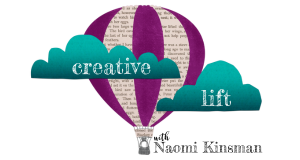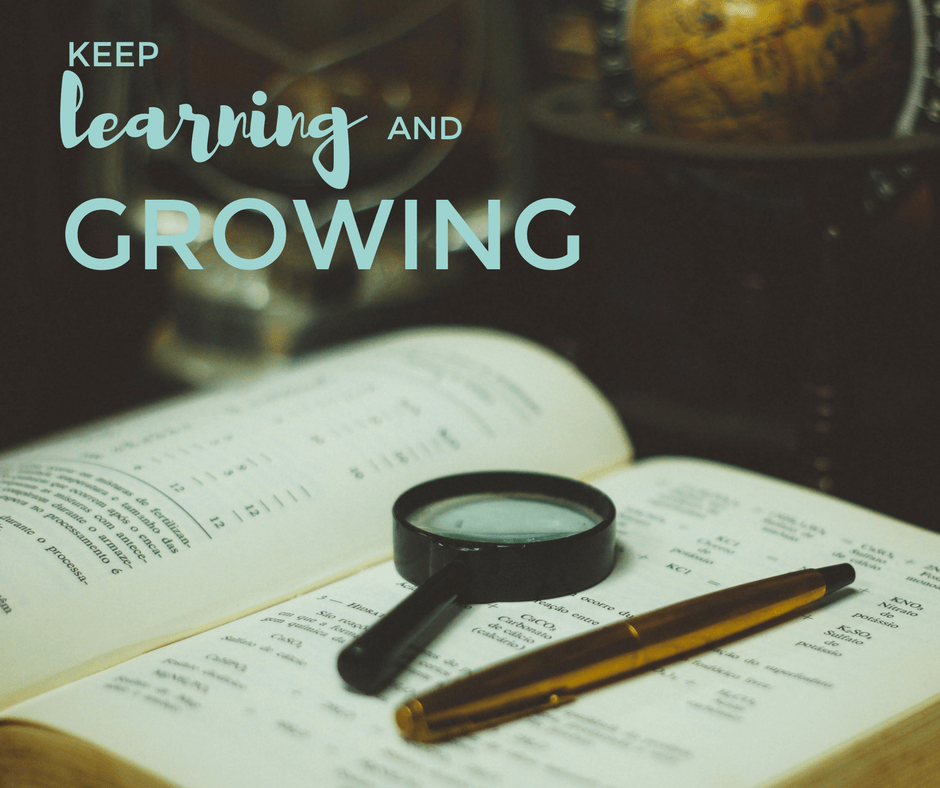by Naomi | Oct 9, 2017 | Creative Life
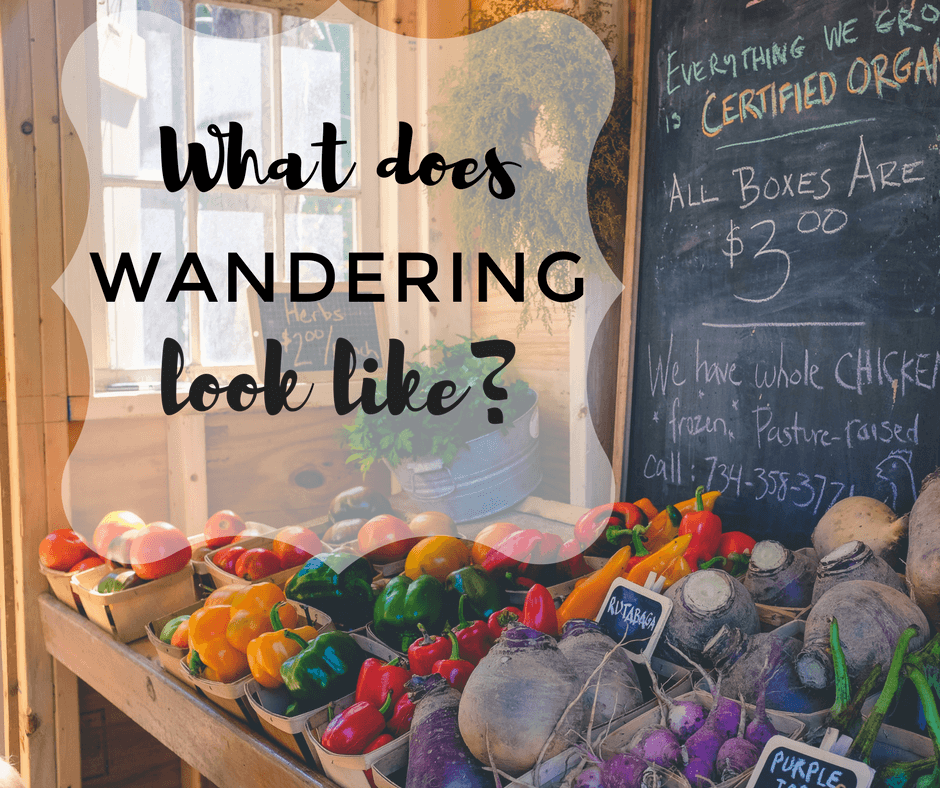
How do you know if something is a waste of time?
A common definition of “waste” is “to use or expend carelessly, extravagantly, or to no purpose. “ Synonyms for waste include squander, misspend, misuse, fritter away, or throw away. No one wants to squander or fritter away time.
But, ask a creative person how she spends her time, and if she’s being honest, she’ll describe work sessions punctuated by time spent in activities which are more difficult to define. Oddly, this time outside work sessions often creates a leap-frogging effect, vaulting work forward in a way that doesn’t happen when one is sitting down at a computer or with pencil and paper.
Unfortunately, the effect doesn’t work if you cut out the work sessions altogether. I’m not arguing that one should wander rather than work. But, there is something to the art of letting go and wandering.
For me, the wandering is literal.
I need to walk around in interesting environments. I need to touch contrasting textures of fabric and smell a variety of loose leaf teas. I need to see interesting patterns and shapes, and listen for contrasting tones of laughter. From the outside, I’m sure this wandering looks like a supreme waste of time. Why am I walking aimlessly, poking into stores, looking through baskets of random antiques, and heading home without buying anything?
I’m collecting. I’m filling up my sensory toolkit so that when I sit down to write, I have words and images and access to the feel of things. Too much time spent at my desk, and my senses dull. Fog settles over my brain and I might stare at my computer screen for ten minutes before coming up with a lackluster sentence. After puzzling over this fog, and how it showed up every now and then, I started to see the pattern.
And I started getting intentional about wandering.
What might speak to your senses?
[Tweet “Where might you wander to collect sights, smells and sounds to infuse your writing with life?”]
Don’t be afraid to carve out time to wander. If you need more encouragement, you’ll definitely enjoy Keri Smith’s intriguing invitation to the art of wandering: The Wander Society.
I’d love to know where you choose to wander! Share your ideas below, or tag me on Twitter or Facebook and let me know what you’re up to. I’m always collecting new ideas for where to wander next.
SaveSave
SaveSaveSaveSave
by Naomi | Oct 5, 2017 | Creative Life
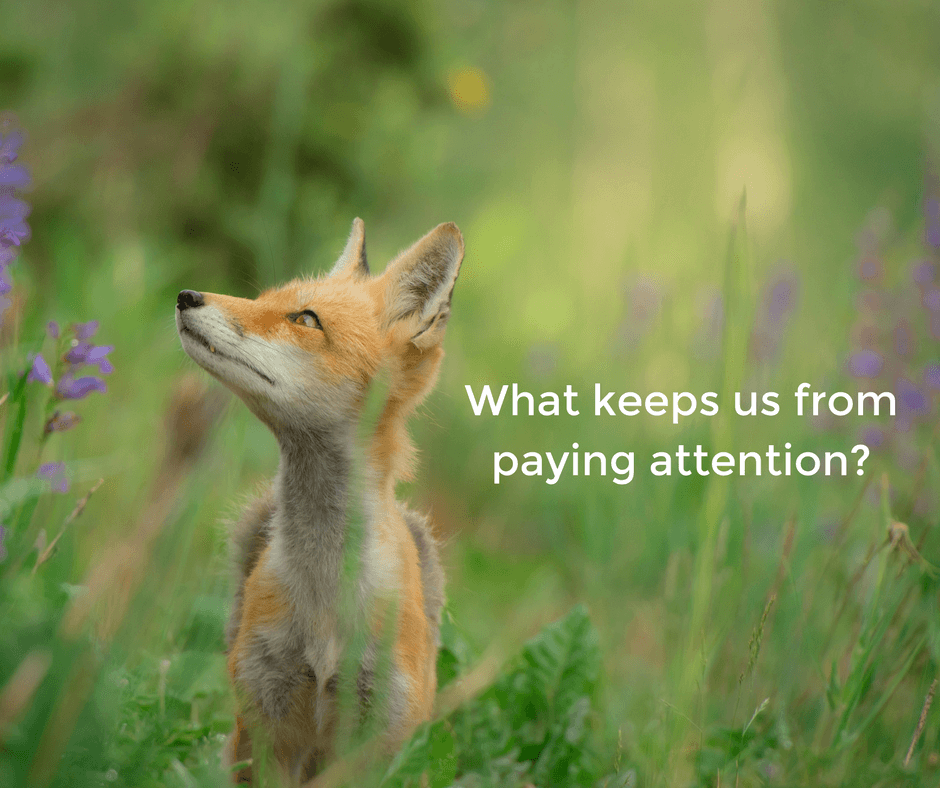
Too often
On my morning run
The neighborhood blurs
My mind far away
I stumble over
Unseen cracks in the sidewalk
Run straight into
Low-hanging branches
My mind circles
Rehearsing how I’ll do what’s next
Or reviewing what I did before
I’m in a tug of war—
Pulled forward
Tugged back
Or, my mind tumbles from request to request
Commitment to commitment
The way it was at summer camp
With campers in costumes
Set pieces scattered across the stage
Everyone calling, “Naomi, Naomi, Naomi!”
Between the words of one response
Another question is shoved
I can’t hear myself think
And no one gets their hoped for answer
We’re reminded about Deep Work
About The One Thing
About deleting, delegating and automating
But too often these spaces of clear and calm
Feel as impossible to reach as the Island of Long Ago and Far Away
Rather than a possible reality in the here and now
What keeps us from paying attention?
Our hearts.
They’re lured and captured and ransomed
By ideas of who we should be
Of what we feel responsible for
And where we wish we could be
(Anywhere but here)
In order to take back our attention
We have to take back our hearts
And hold them gently
Whispering the story
Of who we are
Untangling the true story
From the knots of should and ought to
Until we’re free
by Naomi | Oct 2, 2017 | Creative Life
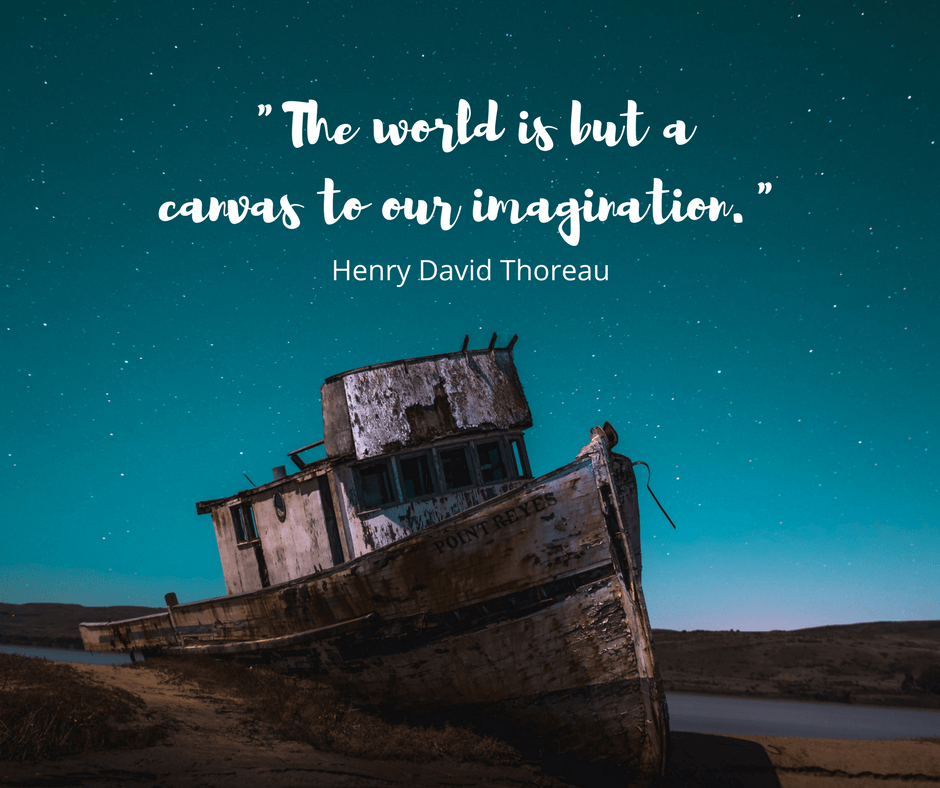
“The artist is a receptacle for emotions that come from all over the place: from the sky, from the earth, from a scrap of paper, from a passing shape, from a spider’s web.”
– Pablo Picasso
“Photography takes an instant out of time, altering life by holding it still.”
– Dorothea Lange
“Every human is an artist. And this is the main art that we have: the creation of our story.”
– Don Miguel Ruiz
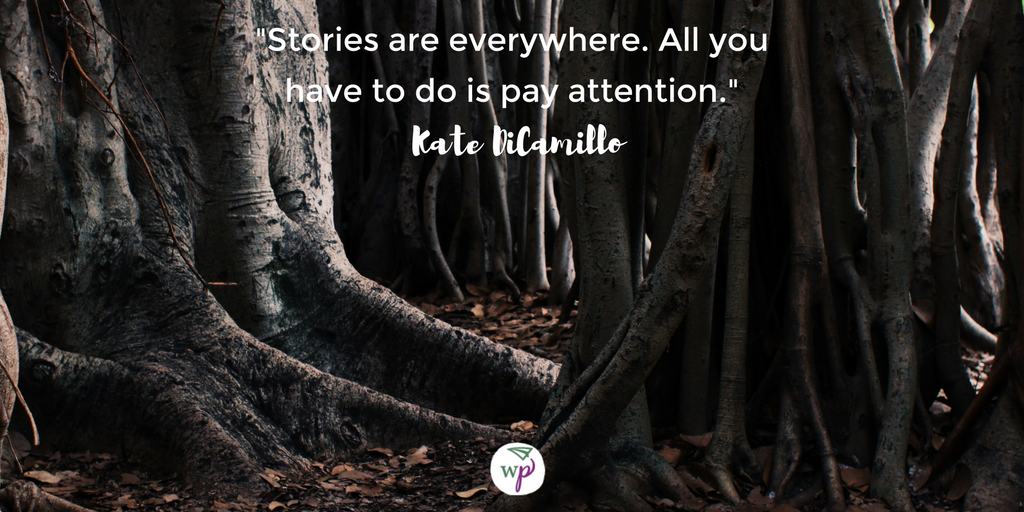
SaveSave
by Naomi | Sep 29, 2017 | Creative Life
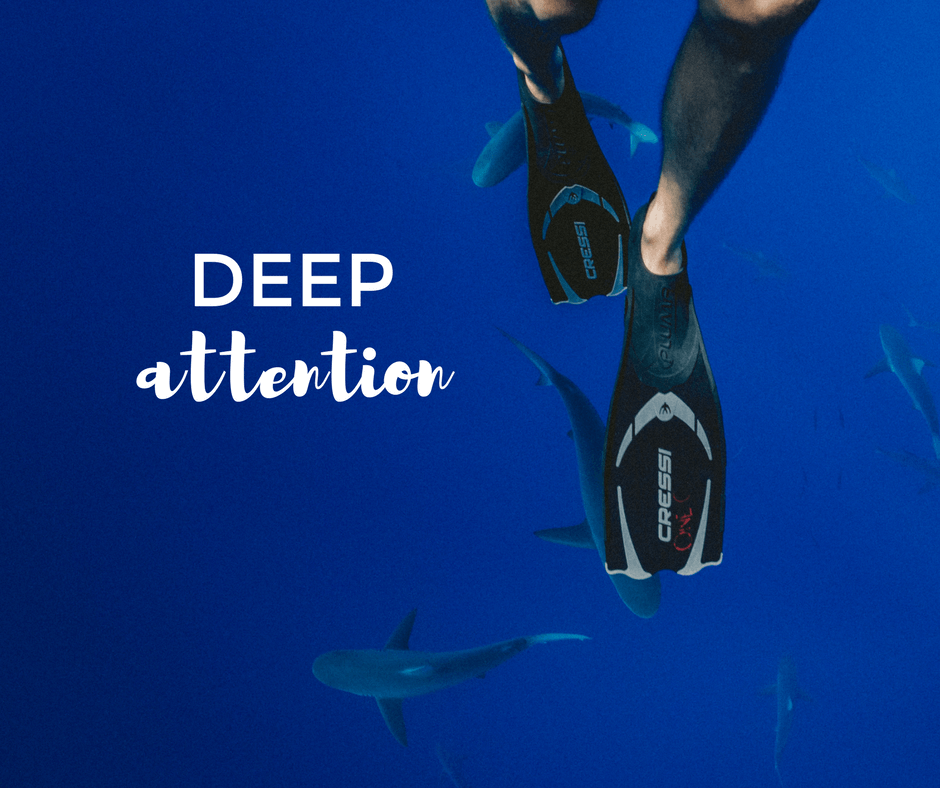
I find it interesting that when we speak about the art of paying attention, we use financial words: paying attention, spending time.
What is your time worth?
This question often sends us down the road of calculation. How much do we make annually? How much does that work out to as an hourly wage? These are helpful time-management questions, but they fall short when it comes to attention management. Here’s another question for you.
How do we make our time count?
Again, this is a quantitative question. The line of thinking sends me down the rabbit hole of a “quantified life.” How many hours did I spend writing? How many minutes running? How about working? Playing? Commuting? Suddenly, I feel like a bean counter in my own life. My attention is spent on counting, not on being present.
Articles like this one explain that negative experiences imprint more deeply on our minds than positive ones do. Understanding this tendency is important not only for mental health, but also as insight into the art of paying attention. What if we were able to treasure each moment as the pearl it truly is, rather than counting or weighing or measuring it?
- How might we notice our lives more fully?
- How might we open, unlock, unleash our attention?
- What might be possible if we noticed just ten percent more of the world around us?
Paying attention isn’t a separate activity.
Like most creative habits, it’s more a way of being than an item on a to-do list. No matter what we’re physically doing—eating, working, playing—our life’s moment can be treasures, or they can blur past, lost in fog. It’s a practice, a muscle we can build, and though it seems simple and possibly even unimportant in the larger scheme of life, the fact is, it IS life.
Your day awaits. How might you bring your attention more fully into its moments?
SaveSaveSaveSave
by Naomi | Jun 12, 2017 | Creative Life
[clickToTweet tweet=”Inspiration to keep learning from Julia Child – ‘You’ll never know everything about anything, especially something you love.”” quote=”“You’ll never know everything about anything, especially something you love.” ― Julia Child”]
“Learning is not attained by chance, it must be sought for with ardor and attended to with diligence.”
― Abigail Adams
“The beautiful thing about learning is that nobody can take it away from you.”
― B.B. King
SaveSave
by Naomi | Jun 1, 2017 | Creative Life
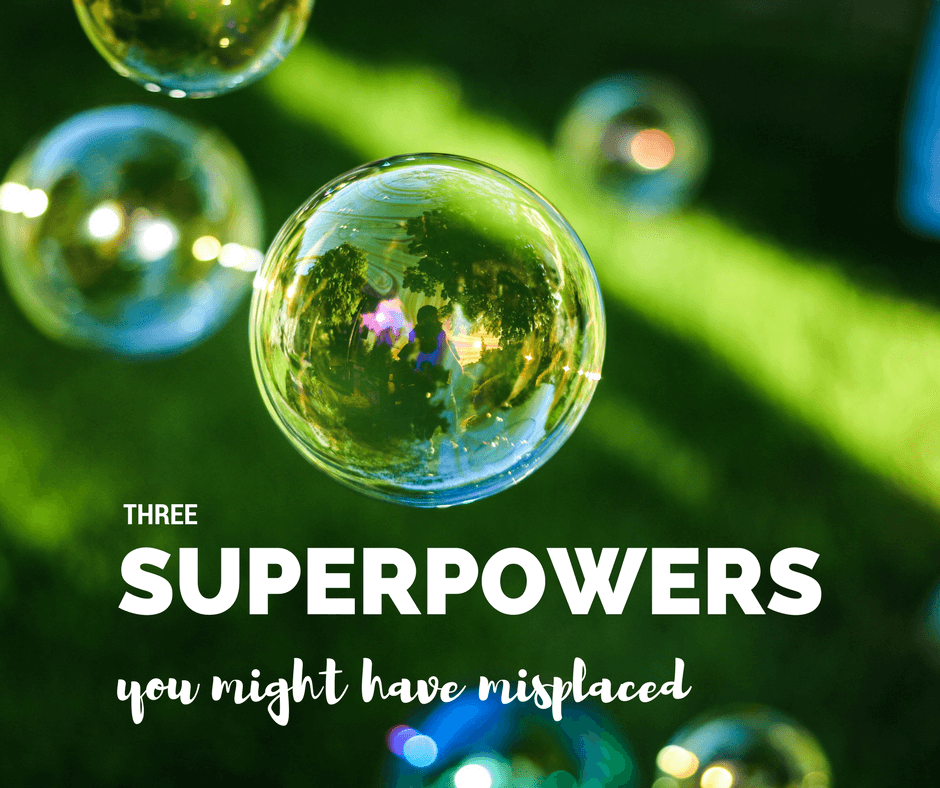
It’s terrifying. You arrive at home after having commuted for a half hour (or more, ugh!) only to realize you don’t remember the drive. Auto-pilot happens to everyone sometimes. Too often, it settles in, a thick fog settling over our entire lives.
What’s going on here?
Our brains, in their complex way, are kicking in to save us calories and time. Why waste precious energy noticing something we saw yesterday and the day before? As far as survival goes, these instincts are absolutely helpful.
For living fully, not so much.
One of the reasons I love spending regular time with young writers is because kids are a constant reminder of what is possible. Kids have superpowers. Actually, we all have these superpowers, but as adults, we often misplace ours.
Have you misplaced any of these superpowers?
Imagination:
Recently, I’ve been watching Anne with an E on Netflix. Among other things, the show is reminding me about Anne’s singular perspective on the world. Time spent outside offers any number of “What if…?” possibilities. What if we coined names that fit the beauty of our local redwood grove or nearby flowering meadow? What if we looked for hints of magic in our everyday lives?
Imagination is a superpower because it turns the mundane into an adventure. All it takes to tap into the imagination is a choice. We choose to ask “What if…?” And while imagination can be silly and whimsical, its power reaches far beyond bringing happiness. Imagination is what allows us to see what’s possible, to imagine innovation and solutions to complex problems and opportunities beyond our current situation.
Belief:
Imagination allows us to dream up possibilities. Belief invites us to roll up our sleeves and bring our vision to life. We’ve all seen a child tugging on an adult’s sleeve asking “Can I …?” (or if they are grammatically savvy, “May I …?”) Adults are so quick to say no, to give reasons why not. We’ve learned through experience that the world can be full of danger, and disappointment is always a possibility.
When kids ask, “Why not?” it can be difficult to hold back the list of reasons that spring to mind. Too often, those same reasons cause us to not try. Last weekend, I hopped on my bicycle for the first time in years. I hadn’t ridden for a litany of reasons: cars, the possibility of crashing, looking silly. We rode 22 miles, to a local town I’d never visited, and the whole trip was a grand adventure. Why not? Exactly.
Laughter:
There’s a widely quoted myth that children laugh 300-400 times a day, while adults only laugh 17.5 times per day on average. While research doesn’t back this wide discrepancy, in general, most of us know that we laugh less as adults than we did as children. Why? Like imagination and belief, laughter is also a choice. And it’s a third superpower that we all can access anytime we choose.
Laughter changes everything. Just try staying gloomy after a belly-laugh. It’s nearly impossible. Finding laughter when we feel gloomy can be a challenge, but once we start laughing, the impact is immediate and powerful. Hopefully you don’t need any more convincing that laughter is good for you, but if you’d like to study quotes from scientists on the topic, you can find eight here.
If you had a superpower, would you forget about it?
Would you forget to use your super-speed, for instance, or your invisibility? Why, then, do we forget to use our actual superpowers? Maybe all we need is a tiny reminder every once in a while. Hey, there, Naomi. Don’t forget … You have a superpower. You have at least three, in fact.
I’ll be using mine today. How about you?
If you dust off those superpowers, I’d love to hear what adventures ensue. And I’d also love to hear: What other superpowers would you say that we all have, and often misplace? I’m sure these three aren’t the only ones.
Feel free to comment below, or, as always, connect with me on Facebook or Twitter. Your stories are an inspiration!
SaveSave
by Naomi | May 25, 2017 | Writerly Play Activities
Visit the Writerly Play Studio and play your way into creative discoveries. Never heard of the WP Studio? Learn how Writerly Play thinking strategies supercharge your creativity here.
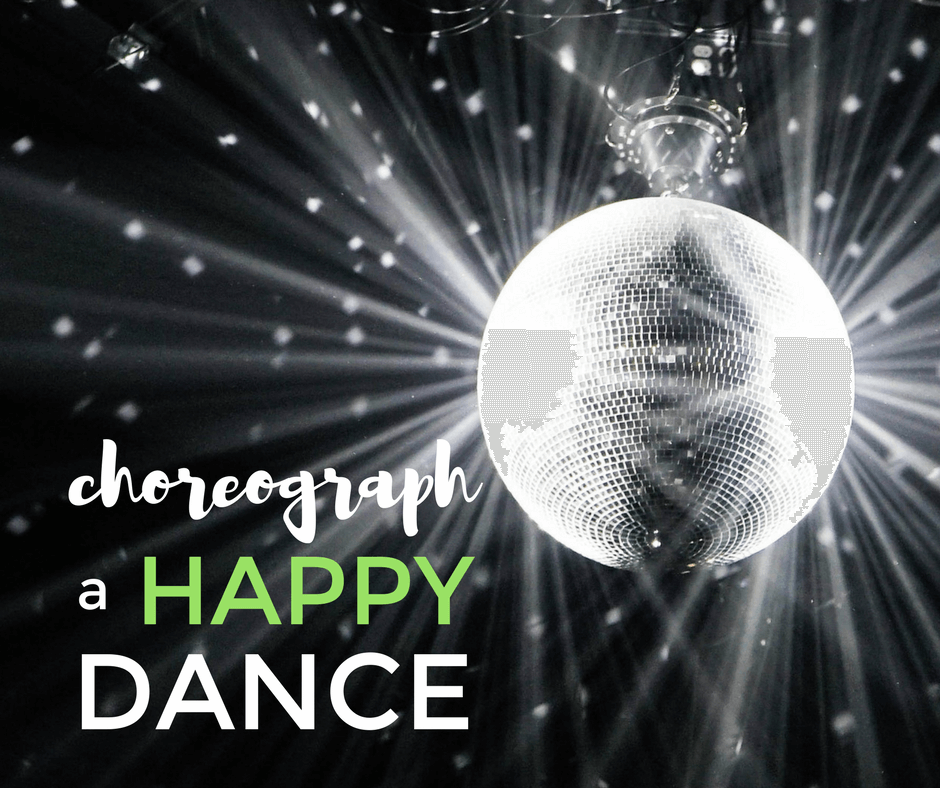
No one can stay in a funk when they turn on a happy song and dance. When you need a creative kick-start or have a happiness SOS moment, you don’t want to have to come up with a solution on the spot. Preparation is key! That’s why taking some time to choreograph your own happy dance is such an excellent creativity-boosting strategy.
When you’re designing your dance, you’ll have a blast of fresh energy that comes from thinking with a different part of your mind. Chances are, choreography isn’t one of your daily tasks, so the process will feel novel and will likely remind you of being a kid. After you’ve designed your dance, you will have a solution in your back pocket anytime you feel your energy lagging.
Try This:
- Choose a favorite song.
- Clear some space to move.
- Turn on your song. Experiment with different steps as you listen.
- Go through the song piece by piece, adding movement. Simple movement is perfectly fine. Remember, this is a happy dance! You’re supposed to have fun with it.
Hints:
- Big movement tends to be more fun than small movement.
- Repeat patterns to keep things simple.
- Listen to the words for inspiration. Many words or phrases provide excellent ideas for simple gestures.
- If you have kids, make your dance together! Your happy dance can be a gloom-buster for the whole family.
by Naomi | May 22, 2017 | Creative Life
Creativity often shows up at the intersection of various thoughts. Here are three on a sense of wonder … what do they spark for you?
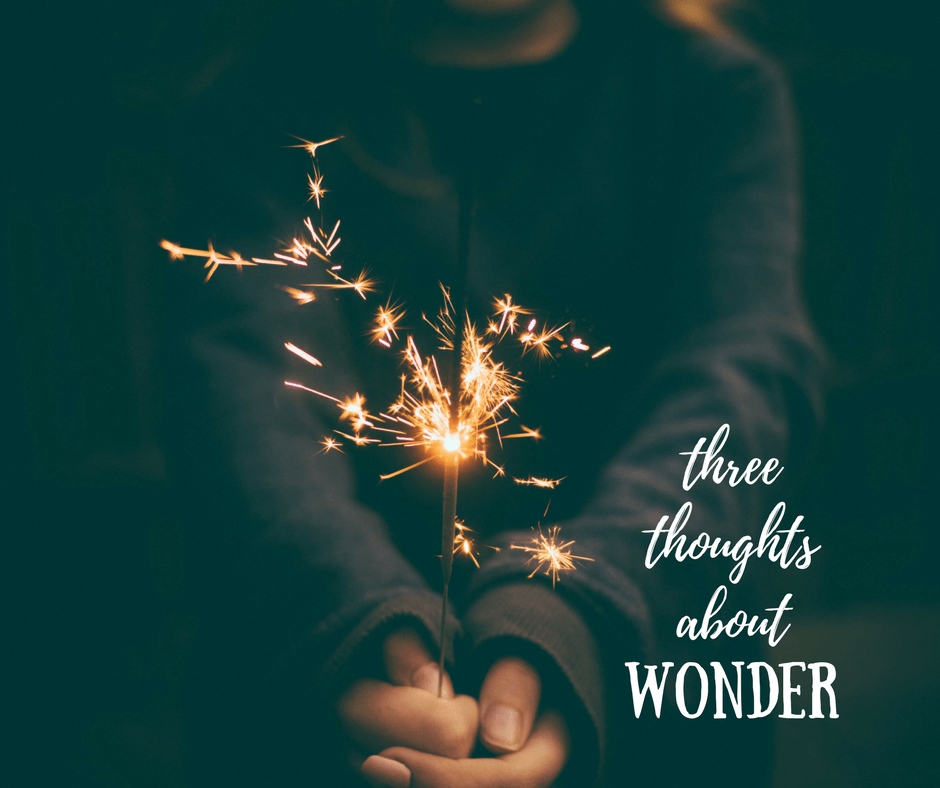
“The moment you doubt whether you can fly, you cease forever to be able to do it.”
– Peter Pan, J.M. Barrie
“Believing takes practice.”
– A Wrinkle in Time, Madeleine L’Engle
“The ability to retain a child’s view of the world with at the same time a mature understanding of what it means to retain it, is extremely rare – and a person who has these qualities is likely to be able to contribute something really important to our thinking.”
― How to Read a Book: The Classic Guide to Intelligent Reading, Mortimer J. Adler
I’m collecting other quotes and images as I continue to spot wonder in our world. Check out my collection on Pinterest.
SaveSave
by Naomi | May 18, 2017 | Writerly Play Activities
Visit the Writerly Play Attic to collect experiences and sensory detail to bring your creative work to life. Never heard of the WP Attic? Learn how Writerly Play thinking strategies supercharge your creativity here.
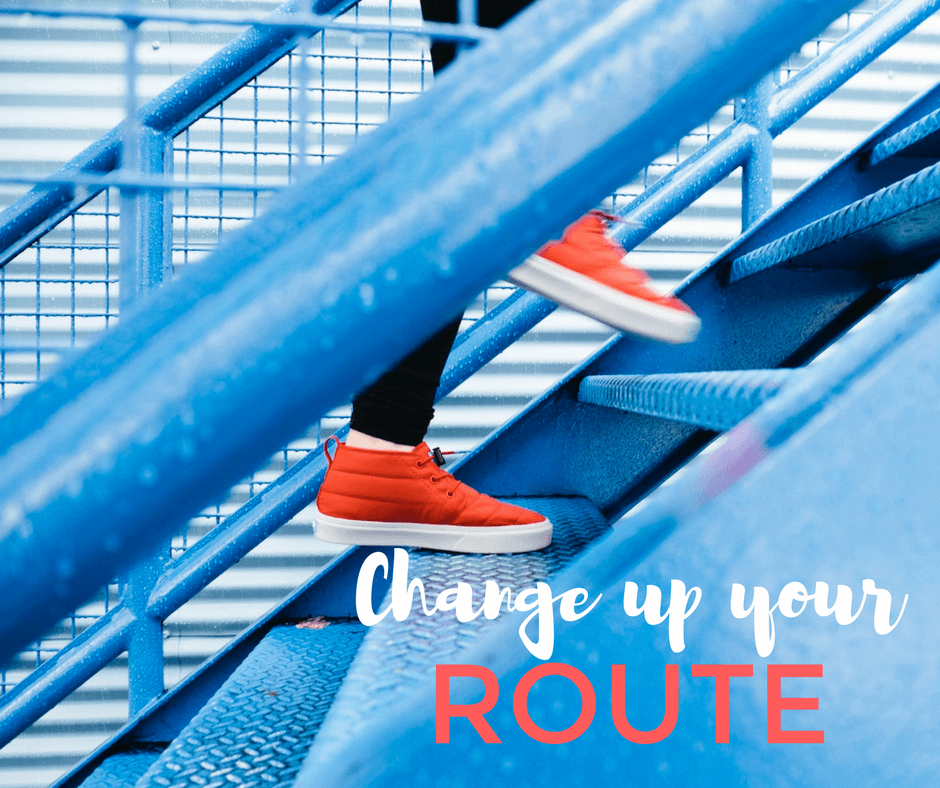
As many as 45% of our daily choices are driven by habit. What does this mean when it comes to developing characters?
- We need to know what they do every day.
- We need to know what circumstances might alter their routine.
- We need to know what impact “waking up” might have on their personality.
It’s easy to assign habits to characters unthinkingly.
Without intending to, we give our characters actions, thoughts or habits that actually are our own. What do you pay attention to when you go for a walk? Do you notice every leaf blower, and find detours to avoid them because the dust makes you sneeze? Do you cross the street to say hello to every dog you see because you simply can’t resist?
You might find that these same habits show up in your characters. That’s okay, of course. Every character a writer creates is somehow woven out of his or her experience. However, sometimes we let these assumptions slip through unchecked. Or worse, we might create characters who walk in their neighborhoods without noticing anything at all. We’re so busy driving toward our next plot point that we allow our characters to be bland. They don’t have little quirks or pet peeves. They’re too busy saving the world to have a favorite snack or secret obsession, such as perfecting their cartwheel.
The best way to shake up our thinking is to start paying attention to our own habits. When we see the many small choices we make every day without even noticing, we can start to think about how our characters might choose differently.
Try This: Change up your Route
Is there somewhere you go weekly, or even daily? What if you took a different route? The fresh scenery might help you to notice what captures your attention. What do you see, smell, and hear? Take the time to notice, and as you do, also consider your character. Would he or she notice the same things? Something different? Would his or her reaction resemble yours, or would he or she feel differently than you feel about leaf blowers or dogs?
Try it out and then come on back and share what you notice. I’d love to hear how this strategy works for you. You can also connect with me on
Facebook or
Twitter.
SaveSave
by Naomi | May 16, 2017 | Writerly Play Activities
Visit the Writerly Play Studio and play around the edges of your work to get to know your character. Never heard of the WP Studio? Learn how Writerly Play thinking strategies supercharge your creativity here.

Whether you love your birthday or hate your birthday, it’s a day that celebrates you! That’s why it’s such an excellent opportunity to get to know a character.
This month, I posted over at Smack Dab in the Middle on using birthdays as a character development tool. Check out the post here.
Or, if you want the cliff-notes edition, here’s a list of birthday-related questions to help you explore unexpected corners of your character’s personality.
On your character’s birthday:
1. What does she love to do?
2. Who does he spend time with? Does he prefer large groups or small ones?
3. Do her friends make her gifts, or are the gifts store-bought?
4. What do the gifts given reveal about him?
5. What does the reaction to the gifts reveal about her?
6. How does he change from birthday to birthday? What remains the same?
7. Does she plan her own birthday? If not, who plans the day? Is this what she would choose, were it up to her?
8. How does he feel about people singing happy birthday, or not?
9. What surprises come up on her birthday?
10. Which birthdays are most meaningful to him?
How do you use birthdays in your writing? Do you have favorite literary birthdays? Feel free to share your thoughts and ideas below, or connect with me on Facebook or Twitter.
